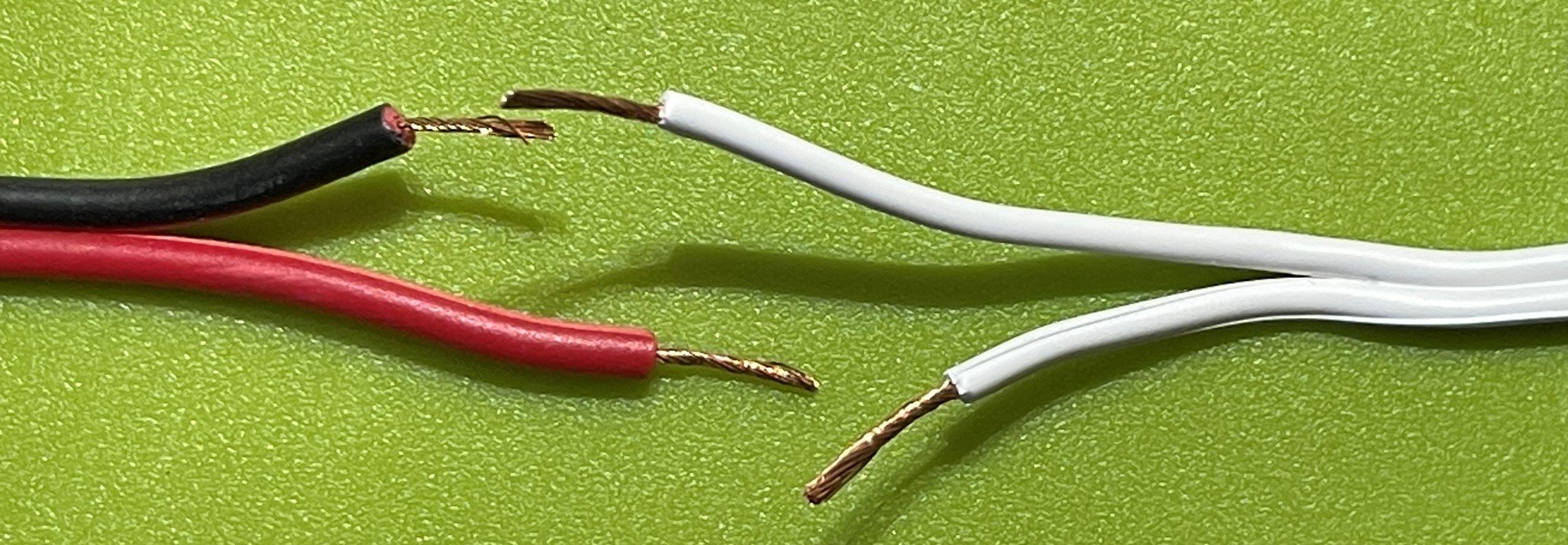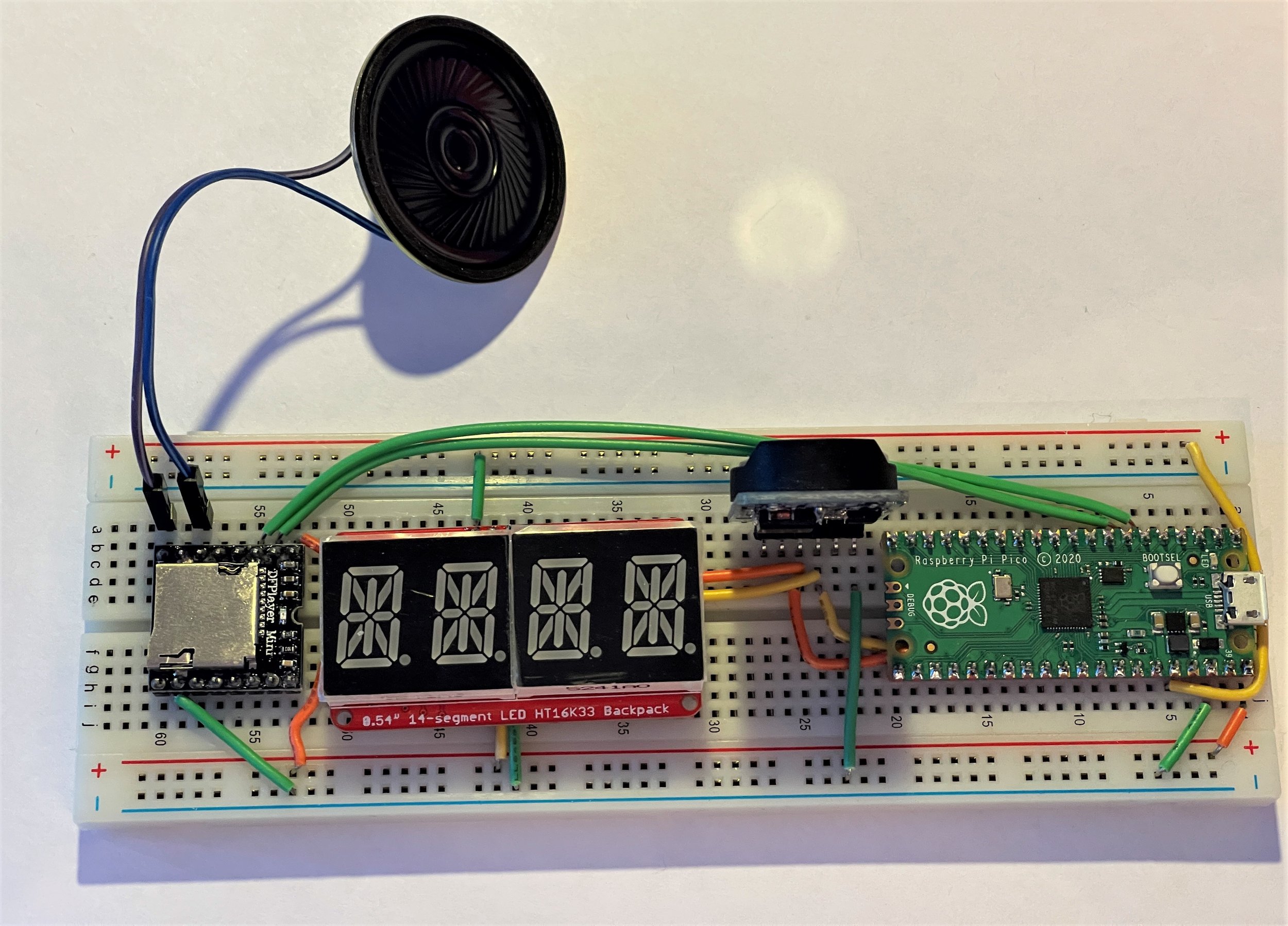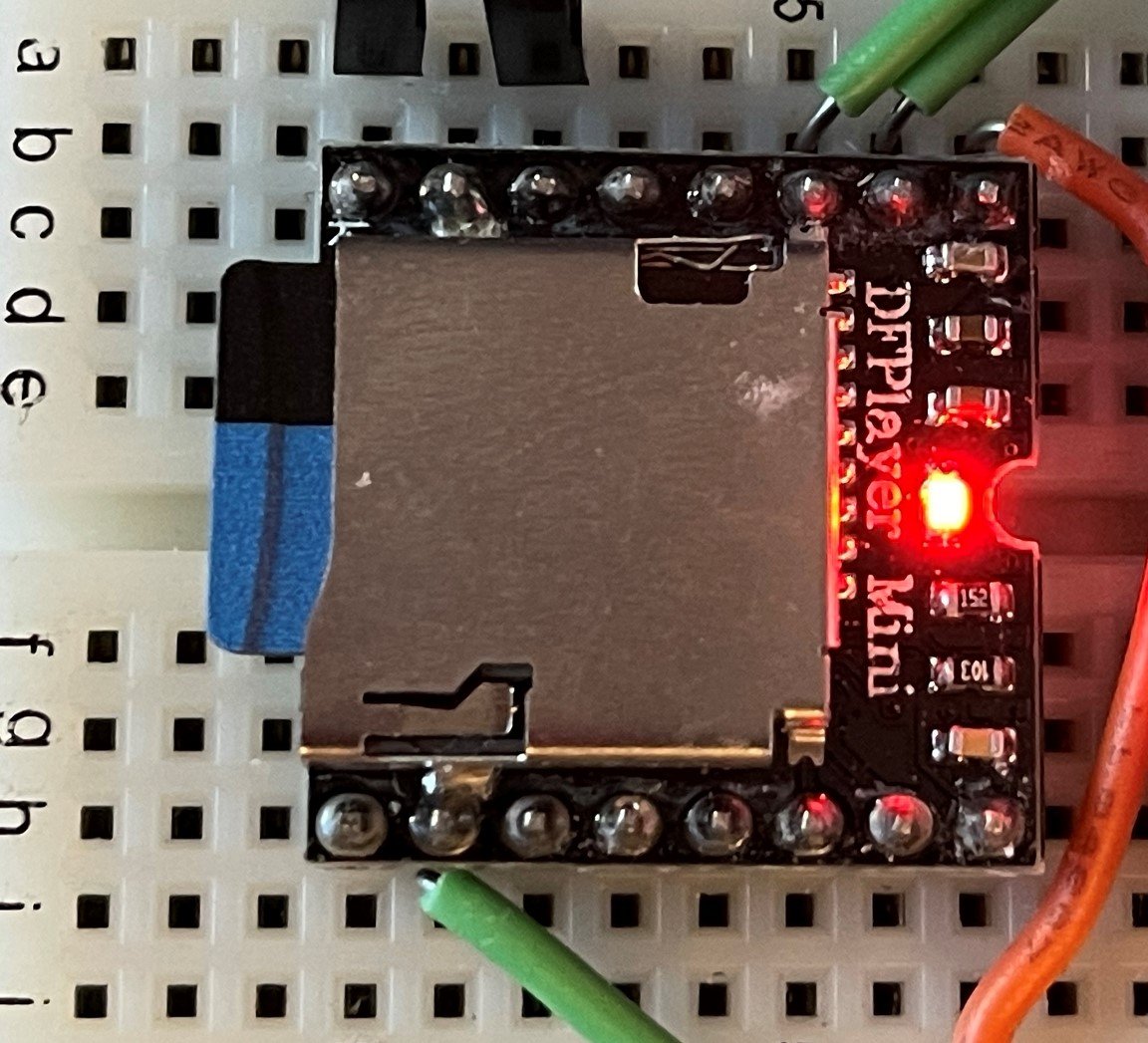Christmas Hardware Meetup
/If you fancy coming along to see us out our meetup it would be lovely to see you. We’re going to be exploring the magic of the neopixel and make some twinkling lights. And eat some mince pies.
Rob Miles on the web. Also available in Real Life (tm)

If you fancy coming along to see us out our meetup it would be lovely to see you. We’re going to be exploring the magic of the neopixel and make some twinkling lights. And eat some mince pies.

We went to Glow at Harlow Carr yesterday evening. It was lovely. I’ve put a few pictures here.

If I’d not held my hand half an inch too low as I reached over to the toaster I’d not have knocked my coffee cup over.
If I’d not knocked the coffee cup over I’d not have had to grab a cloth to stop the coffee from going everywhere.
If I’d not had to grab a cloth I wouldn’t have moved the milk jug I was holding in the other hand.
If I’d not moved the jug I wouldn’t have sprayed hot milk up the front of the coffee machine.
If I’d not sprayed hot milk up the front of the coffee machine I’d not have had to give it a good clean.
If I’d not cleaned the coffee machine I’d not have jogged a dial that sets the machine to expect ground coffee.
If the machine expects ground coffee it refuses to work until you give it some.
If you try to use the machine and it refuses to work you think it is broken and set about mending it.
If all attempts to mend the machine fail you eventually get around to reading the manual (last resort of the barely competent).
If you read the manual you find that the error display is telling exactly what happens and what you need to do to fix it. Hurrah.
Oh well, at least the coffee machine is cleaner now than it has been for a very long time.

I’ve always regarded writing software as one of the most creative things you can do. So I really like this from David Whitney. It’s one of the posts in the .NET Advent Calendar, which looks like it is going to offer some interesting stuff to read.

To install the new burglar alarm I had to extend a power supply cable by cutting it and inserting a new piece of cable. It was important to preserve polarity. If I’d got the wires the wrong way round I’d have let all the smoke out of the device and its power supply. Which is a bad thing.
So I cut the wires as you can see above. This meant that it would be very hard to me to join the wires incorrectly. I’m quite proud of this, although it is probably something that everybody else has been doing for years.
Additional bonus: This approach meant that when I added the heat shrink tubing over the top of the joined cable the join made a slimmer lump.

Travel the world with ring….
I installed our first burglar alarm a very long time ago. It was the morning after we woke up in the night and went downstairs to find the front door standing wide open. The fact that we were due to head off on holiday that afternoon made it even more exciting. I went down to the local DIY warehouse first thing to pick up a box of bits and a large bell box to go on the front of the house. That alarm worked well until one day it got bored with alarm duties and decided that it really wanted to be a beatbox and filled the hall with clicks and beeps.
The one that replaced it that also performed its duties well, although recently it has been forgetting the time of day and the backup battery inside must be well past its best. So I’ve just fitted alarm system number 3. I bought it in the Amazon Black Friday sales. It was very well reduced. In fact, if I think about it every alarm that I’ve bought has been cheaper than the previous one. In a hundred years or so they will be paying me to take them away. Of course, Amazon is not looking to make a profit on the sale of the hardware. That is so last-century. What it really wants is the 8 pounds a month I will probably end up paying for the monitoring service.
The alarm was very easy to install. The sensors in the basic kit were already connected to the alarm box, the additional ones just needed to have their QR codes scanned to introduce them to the system. I didn’t have to run a power supply to the keypad that goes in the hall. That will run off batteries for a good length of time. You can put the alarm box anywhere you like and you can also wire it directly to your network rather connect over WiFi. There is also a backup mobile phone in the alarm box in case your home falls of the internets.
It is much easier to configure than my earlier alarms were. Rather than making you think about setting up “zones” you just have three modes. Alarm off, alarm on when you’re at home (for example at night) and alarm on when you are out. The modes can be set on a schedule or based on your location. And of course you can configure and manage everything from your phone.
I’m impressed. Although I’m not sure I’ll bother with the stickers.

I was going to write a post about how irritating it is that when I go onto YouTube I mostly see adverts for SquareSpace (which I’ve been using since 2006). Having thought about it though, I now rather like the idea. At least I won’t be encouraged to buy new things if all I see is messages about something I already own.

Forza Horizon 5 is awesome. I got round to downloading it onto my Xbox One X over the weekend and it looks amazing. I’m not sure what the latest Xbox will add to the experience, but for now I’m really enjoying zooming round Mexico in a variety of very shiny (at least at the start) vehicles. They’ve don’t seem to have messed with the formula much, just made it all bigger. You start the game by being dropped from a plane in a variety of different cars. The car handling seems spot on to me, with lots of opportunities for off-road action - whether you intend that or not.
The only jarring part of the experience was the return of loading delays to my gaming experience. Spending time playing Ratchet and Clank on the PS5 with its instant start and level swaps has spoiled me a bit. One day I’ll get the latest Xbox, which should improve things a bit. And if you just drive around and admire the scenery as I’ve been doing there’s no loading at all.
If you have an Xbox you should get this game.
I learned a couple of neat things getting the presentation to DDD yesterday. I’m putting them here so I won’t forget for next time, but you might find them useful too.
If you want to play computer audio during your presentation (I did) you can click the “Include Computer Sound” option you’ll find at the top left of your presentation window. Now when you play videos and use programs that produce audio output the viewers can hear you.

If the presentation sound output from your computer sounds a bit quiet, open up the Control Panel, select Sound and then open the Communications tab you can see above. Windows reduces the level of audio outputs from your PC during a call so that messages from other programs don’t intrude too much. You want the programs to intrude, so select the option Do nothing.

Now people can hear all of your PC sounds at full volume, including noises that you might not want during your presentation. But you can tame these by right clicking the speaker icon in your task bar and selecting Open Volume Mixer from the context menu. There you can control the volume level from all the applications on your machine. You can boost the ones you want to hear and quieten the ones you don’t.
I like to use a second usb camera on my PC to give close up views of items during a presentation. I just use the Windows camera application for this. If I’m sharing my desktop the viewers can see the camera preview window on my desktop and it all works OK. However, if I’m using Teams it doesn’t work. As soon as I open the video source in a Teams call (so that folks can see me speaking) none of the other camera devices can be picked up by applications on my PC. The only way round this is to turn off video sharing in Teams while I use the second camera and then turn it back on again afterwards. Or at least, that is what I did.

I did my session at DDD first thing this morning. It was fun. Not sure how many turned up online, but there were enough to make some nice comments at the end. The session was recorded. I’ll post here when it is ready to view.
Then it was time to prepare for my production duties. To do this I had to do some authentication stuff which turned out to be really fiddly. And I made a complete idiot of myself in an hilarious way. I was in a Teams call with Rik who was patiently walking me through the process of connecting to Teams using the right identity.
Rik: “The first step is to log out of your current user ID…”
Rob presses the logout button. Call instantly drops. I could hear the sound of Rik’s face palm all the way from Leeds…. Oh well. I think (hope) he actually found the whole thing rather amusing.
Anyhoo, after a bit more faffing around I was connected and able to produce a session, which was great fun. The whole day was great. It’s a shame that we couldn’t meet up in person, but for this event the organisers set up Discord channels for all the sessions and this worked a treat. It is going to be interesting to see how they can integrate these kinds of things into an in-person conference so that people from all around the world (and we did have quite a few) can take part as they do now with the online versions.
Thanks very much to the organisers for setting up such a great event.

Well, the slides are all complete for DDD tomorrow. I’m on right at the start. My session starts at 9:00 am. The good news is that it will be recorded, so you don’t need to remember to wake up early to watch it……

Spent today in PowerPoint writing slides. And fiddling with pictures of red leaves.

Every now and then I make something that I’m really rather pleased with. I’ve just about finished the Pomodoro timer and it I like how it has turned out. You twist the knob on the right to set the time. Then you set the mode (whether you want time announcements or not) and then you press in the knob to start the clock.
If you press the big purple button the timer announces the time remaining or used, depending on how you set it up. The sound quality is OK too. The speaker packs a surprising amount of punch. With a bit of luck the project will be in the next issue of HackSpace magazine.

Today I discovered (after fifteen minutes of total panic) that using the wrong test code in a device you are building will cause that device to appear broken.

I’ve started on the hardware for my Pomodoro timer. I thought I’d build the circuit on a breadboard before I wired up the finished version in the case. I started off trying to do everything super neat. Then I discovered that some of the connections did not lend themselves to neatness, so I ended up just adding all the wires that would make it work.
I think it is called a breadboard because people look at it and go “crumbs”…….

I spent a chunk of today recording myself. Something that I always find kind of frightening. My talking Pomodoro timer needs something to say, and that something will be things like “Your have twenty minutes remaining.” I’m not sure how hearing such messages will help with motivation (actually I’m fairly sure it won’t) but it is an interesting technical problem and other folks might find uses for the technique.
You could try using your skill and judgement to work out what message the above sample contains, or I could just tell you that it is “There are fifty four minutes…”.

I didn’t know what a Pomodoro timer was until Andrew suggest that I might like to use a Rasbperry Pi PICO to create one. On my first search I typed in Pomorodo and thanks to the magic of search correction it found the right pages. I continued calling the device Pomorodo from then on, which would have been rather embarrassing if I hadn’t just spotted it today. A Pomodoro timer is used to time tasks in a technique that you can use to improve your focus. I’m making one that will talk to you.

I’m making a new device. Can you guess what it is? Today I tried to print out the top plate. I hadn’t used the 3D printer for a while and it shows its displeasure with this by ramming the print head into the bed. I think the probe in the BL touch sensor (which is how the printer knows where the bed is) had got stuck.
After a fevered few minutes resetting the print height I managed to print out a reasonable version only to discover that the big hole (which is for a big button) was way too small. Oh well. There’s always tomorrow….

Hackspace Magazine has just published another one of my articles. You can find out all how to make a Crackers MIDI controller powered by a Raspberry Pi PICO and then use it in a Pure Data synth. It was great fun to write, you can read it here.

The DFPlayer Mini is an amazing device. Particularly as you can pick one up for around a pound on AliExpress. It will pull mp3 files off a MicroSD card (which is the most expensive part of the system) and play them for you. It outputs good quality stereo and even includes an amplifier that will drive a pair of speakers up to useful levels.
I’m using it in a device that I’m building. I’ve got a Raspberry Pi PICO triggering the audio playback over a serial connection. I loaded an MP3 file onto the SD card for testing. I used the track Fireflies from Owl City for no particular reason. The music started playing, which pleased me. Then, around 20 seconds in the drums and the bass kicked in and the whole thing crashed. Which did not please me.
It’s a power supply thing of course. I was powering it from a USB port on my PC which is a bit weak. I switched to a different port and it worked fine. There’s an important lesson here that I’ve mentioned before. If you’re making something and it starts to misbehave try a different power source.
Rob Miles is technology author and educator who spent many years as a lecturer in Computer Science at the University of Hull. He is also a Microsoft Developer Technologies MVP. He is into technology, teaching and photography. He is the author of the World Famous C# Yellow Book and almost as handsome as he thinks he is.